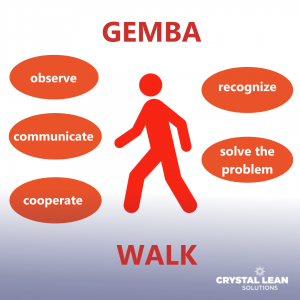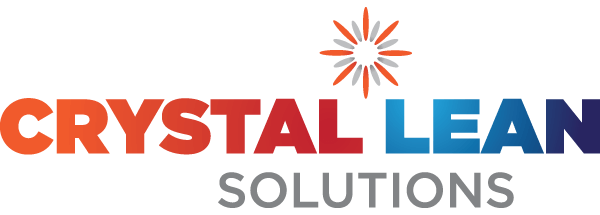The Gemba Method
When a complicated project is in progress, it is common for the people engaged to lose track of the effort being put into the process they are intending to enhance. An actual issue that affects the company’s earnings and consumer experience might become limited due to data reports and repetitive discussion around a conference table.
Recognising this issue, Toyota’s process improvement specialists created a Gemba Walk. Companies have formally used the Gemba method to better their workplace since the late 1900’s and continue to do so today. Within Lean Manufacturing, the term Gemba is used as the place where value is created – a place on the production floor, in the warehouse, or elsewhere.
The Gemba Walk method speaks to the importance of regular management visits to the workplace to get a closer look at the situation or to better understand the problem. It is useful to practice this approach not only for the direct management, but also for the engineering staff. Gemba Walk reveals real problems, as well as identifying bottlenecks in operations, and processes that are not receiving enough attention.
From manufacturing to food and beverage industries, letting executives spend some time on the production floor allows them to gain a true understanding of what is going on, the difficulties that are being addressed, and the possibilities available. This type of analysis contributes to a leadership that is more in tune with the day-to-day operations of an organisation. The frequency of such walks should be determined by management, depending on the situation and the workload. In order to ensure continuous improvement – organise regular Gemba walks, this will allow the organisation to ensure compliance with strategic objectives, reduce losses, and improve the quality of the product or a service.
The most crucial criteria in a company are difficult to quantify and can easily be ignored. The presence of executives emphasises the significance of the employees on the site, as well as their respect and concern. Regular Gemba walks can help you successfully transition to an open-door policy, as long as leadership is ethical and open-minded. Engineers could also visit problem areas to provide their staff with a fresh viewpoint while considering changes.
A Gemba visit should be used for more than just discovering and correcting errors. The goal of the initial walk-through is to examine and discuss issues about anything unclear. There is no predetermined order in which the walk-through should take place. Personnel on one factory floor line can visit another to evaluate why it works better than theirs and what lessons can be gained from their peers.
To effectively organise and use the Gemba method – it is necessary to involve company leaders and managers, as well as supervisors, project leaders, and process owners. Here’s how to do use the Gemba method effectively:
-
Prioritise
Before you go on the walk, plan out what you hope to accomplish during the tour. Many Lean management professionals like to identify a topic for the walk. Your topic could be cost reduction, improving workplace safety, or increasing employee productivity. Whatever your goals are, identifying them before the Gemba walk will help you stay focused and address one aspect of the project at a time.
-
Communicate goals
Let your team know what you hope to accomplish. This can remove the element of surprise and help them feel engaged in the improvement process. You can share your goals and priorities and assure them that the purpose of the walk-through is not to identify individual employee shortcomings.
-
Evaluate Processes
With the support of your team and with the help of a priority checklist, conduct a survey. Evaluate existing processes and activities. Focusing on the process, not the team, can improve their cooperation with your efforts and make it easier for you to observe individual project components naturally.
-
Identifying Waste
Identify where the most valuable parts of your production process are and survey those areas. For example, if the focus of your walkthrough is safety, identify where there is the greatest likelihood of danger. Similarly, if you are looking for productivity or cost savings, look for potential sources of waste or inefficiency.
-
Ask for a second opinion
You can invite another executive or a colleague who is not directly involved in the process to accompany you on your walk. Their objective perspective may provide unique ideas or questions that you can use for the final evaluation. They may also have suggestions for solutions or strategies. Getting a second opinion can expand your understanding of your performance and help you look at the process from a third-party perspective.
By familiarising themselves with the processes in person, project managers and Lean production managers can develop relationships with their teams and expand their knowledge of the operations they oversee. A walk-through can also help them engage their team members in a process of continuous improvement. By interacting with teams and seeing the work in action, managers can more clearly communicate their expectations and encourage employee engagement.
Adopting Gemba Walks has various advantages for businesses:

- It facilitates strategic decision-making based on useful insights and information
- It brings teams and their stakeholders closer together
- It promotes teamwork, which facilitates communication throughout the organization
- Taking the time to visit your employees on the floor demonstrates that you care about their well-being and boosts employee morale
- It aids in the detection of both disruptive and good developments
- It assists the business in analysing and improving various processes, which translates to saving time or money and simplifying operations
- It assists businesses in identifying opportunities
- Managers can discover safety issues before they cause injuries or accidents
- It enables enterprises to standardize their procedures
- Gemba walks, when applied effectively, establish a culture of continual improvement
How CLS can help
Crystal Lean Solutions offers a unique programme where we work together with the client and develop a Gemba process. This is a process by which we deploy and sustain a culture of continuous improvement, within all levels of the business. The two areas that we develop are:
- The Problem Solving cross functional team
- The Lean coach supporting the problem-solving team
In Summary
Effective project management strategies can help you continuously improve processes, motivate teams, and communicate project goals. Lean management is one management approach that can help project managers identify potential sources of waste and align their teams and activities. If you want to learn more about Lean management strategies, understanding the importance of Gemba and walking the Gemba can help you. When you’re done summarising your ideas and preparing proposed solutions, report your findings to the team. Even if your walk reveals nothing remarkable, share your findings – it will help team members feel involved and reassure them that the purpose of the walk is not to criticise their efforts. Help them feel like active participants in the process rather than objects of observation.
You can take their suggestions and incorporate them into your revision process. If you have new strategies you want to try, communicate these new goals or methods to your team. Continue to do tests to understand the effects of your solutions and continue to improve your processes.
